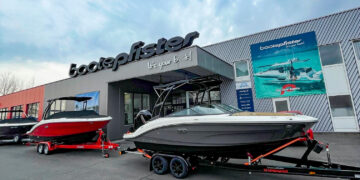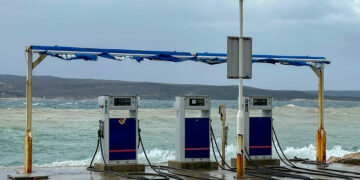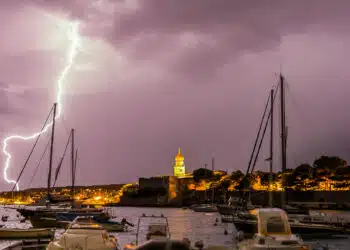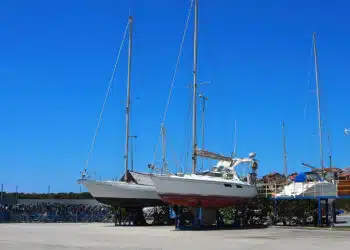A skillful anchor maneuver is the basic prerequisite for a quiet night on board, but not the guarantee for it, goes a sailor’s saying. What should be considered when anchoring, how a proper anchor maneuver should be driven, when an anchor watch is appropriate, and how SeaHelp’s Premium Pass helps with anchor diving when the anchor gets stuck during retrieval – skipper tips from SeaHelp’s editorial team for a successful cruise.
Six things are what every skipper should consider when looking for the place at anchor for the night.
1. the anchorage – avoid leegerwall situation
The anchorage should preferably be a well-protected bay with offshore wind. There should be enough space for schwojen, and the water should be deep enough. You should also pay attention to a suitable anchoring ground. Finally, there should not already be too many yachts anchored in the bay, especially if their schwoj circles are difficult to estimate. If the anchorage is well visited, one or two shore lines should be deployed in addition to the anchor harness, so the swooping circle can be further minimized.
2. The anchor harness – double holds better
It is best if the yacht is equipped with two anchors – one should have a high holding power and can be made ready to drop in a few easy steps from the bow fitting (plate/Danforth or plowshare anchor). The secondary anchor is made ready for use as a stern anchor, for mooring or for mooring (such as a collapsible stick anchor).
3. Chain length – a lot helps a lot
At least as important as the use of a suitable anchor is the correct chain or hawser length. The principle is to put three to five times the water depth of chain length. If a hawser is used, five to ten times the water depth should be used. In general, as much chain as possible should be deployed for optimum static friction on the bottom.
4. The water depth – not too deep and not too shallow
In addition to sufficient swell space, the right water depth is an aspect that the skip should definitely pay attention to. Because: if the water is too deep, there would be unnecessary chain hanging, and there would be no static friction on the bottom. If the water is too shallow, there would be good bottom static friction, but the wave motion would not be able to be cushioned sufficiently.
5. drop anchor! – The right anchor maneuver
Above the desired anchorage, the helmsman picks up small speed to leeward and gives the command Drop Anchor! The man/woman at the bow then drops the anchor to the bottom, then the chain is braked sensitively. Once the desired length has been run out, the chain is braked and stopped. The yacht jerks gently into the chain. When the chain is occupied, a large holding trial is run.
Under sail, an uphaul is run and the anchor is dropped as soon as the yacht picks up speed back. In case of emergency anchoring on leeward walls or in heavy weather, it is recommended to set both anchors in tandem (wading). If you want to limit the swell, you can drop both anchors individually in a V-shape (Vermuren).
If you want to be on the safe side, submerge the chain to check if it is straight and if the anchor has dug in correctly.
6. The anchor watch
In the area of a roadstead or near a fairway, anchor watch must be kept on yachts over 12 meters in length. But even otherwise, one should always keep an eye on the location of one’s own anchor – and that of neighboring yachts. In calm weather, there should be a person on board who can put in chain if needed and, if necessary, go up and re-anchor.
In heavy weather, it is advisable to keep at least one full sea watch on board. It should be able to raise anchor in difficult conditions, deploy two anchors again if needed, or leave the bay if necessary.
The best way to check the anchor position is with the anchor bearing. Anchor warning functions of the echo sounder or an app (e.g. Ankeralarm) should only support the anchor watch, they are not a replacement.
By the way: anchor up you go directly above the anchor. Should the anchor nevertheless once in a foreign anchor chain or a stone at the bottom: no problem – holders of the Premium Pass from SeaHelp will be helped in this case free of charge and quickly by anchor divers.
















